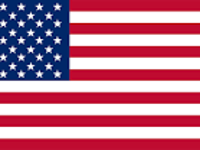
Design Smarter: 5 Key Tips for CNC Turned Parts from CNC Tool Design Services Experts
Design Smarter: 5 Expert Tips for CNC Turned Parts from CNC Tool Design Services
Designing CNC-turned parts is more than just throwing a few shapes in CAD and hoping for the best! It's more like preparing a dish for a Michelin chef: the ingredients matter, the method matters, and precision is everything. Enter CNC Tool Design Services, the unsung heroes of flawlessly designed parts.
Whether you're a professional engineer or just beginning to experiment with CNC Tool Solutions, these five expert tips will help you design easily manufactured and efficient parts. Who wants to spend hours designing a part that ends up in the scrap bin? Are you ready to step up your game in CNC? Let's get rolling!
1. Keep It Simple: Design for Manufacturability
One of the most common mistakes in design? Overcomplicating the piece. Just because a CNC machine can do something doesn't mean that it should. Each unnecessary groove, undercut, or angle adds time to the machine and, therefore, costs you money.
Experts in CNC Tool Design Services suggest the best practice for all designs is to keep it simple- basic geometries with straight lines, standard hole sizes, and minimum tight tolerances. This will not only make CNC Tool Fabrication more straightforward but will also minimize the risk of machining errors.
Pro tip: If your design looks something like a Transformer movie, you need to tone it down.
2. Watch Your Tolerances - They Matter (A Lot)
Of course, you can set tolerances down to the micrometer, but unless you are manufacturing something for outer space, you might be wasting time and money. Experts from CNC Tool Solutions recommend that tolerances should be set realistically according to the intended function of the part.
If it is too tight, then you get to spend more on inspection and rework. If it is too loose, your parts will not fit together properly. That happy medium is the precision to practicality trade-off.
Think of it this way: Tailoring a suit needs some room for a good fit, but it doesn't need laser precision down to your DNA.
3. Material Choice Isn’t Just About Looks
Selecting the correct material for the CNC turned component is like choosing the correct type of pasta for your sauce- it matters. This is because different materials react to the CNC Tool Fabrication processes differently. One example is aluminum, which is light, easy to machine, and widely used; titanium is strong but can be very tough on the tools.
Generally, the CNC Tool Design Service professionals consider the following three things when recommending materials:
-
Machinability
-
Durability
-
Cost
It's not a very good idea to design a fantastic part and later find that it's pretty much impossible to machine the part or that the machining costs are unbearably high.
Bonus: Some materials wear out your tooling faster, so some wise material choice can save quite a bit in tool replacement costs.
4. Design with the Tool in Mind (Literally)
Ever tried assembling IKEA furniture with your hands? Well, it isn't fun at all. Now, the same goes for designing parts without considering the actual tools that will make them. Your design must receive limitations of CNC tools, things like tool reach, cutting angles, and diameter.
If the internal cavity is too small or the radius is smaller than your cutter, good luck to that machinist because he is going to have a headache (and possibly a few choice words). Good CNC Tool Solutions are all about creating harmony between the design and the tool capabilities.
Design smarter: Always leave a window for the cutter. And remember-end mills have feelings, too.

5. Minimize Setups - Maximize Efficiency
Something on the inside: Every time you set a part on the machine, the chances of misalignment increase. And misalignment means either some time to rework it, or scrap it, or worse, some customer complaints.
CNC Tool Design Services professionals advise part design for as few setups as possible:
-
All features consolidated on one axis.
-
Not having extra features that need setup with multiple angles.
-
Designing preferably symmetrical parts
A lower number of setups leads to speedier turnaround, lower costs, and happier machinists.
In short: Make it skinny, simple, and setup-friendly.
Final Thoughts
Designing CNC turned parts is a coverage of aesthetic beauty and performance and precision toward practicality; it is best obtained when you go to experienced CNC Tool Design Services, especially when high-precision applications or complex components are involved.
Outsourcing CNC Tool Fabrication or organizing it within the company will have those five tips in mind to ensure not just that designs are machine-friendly but also cost-effective. After all, great design isn’t just about how cool it looks on screen but how smoothly it comes off the machine.
So, before launching the next design on your CAD software, ask yourself: Is this design smart enough to machine smart?
Contact us to know the difference between a good part and a great one in the world of CNC.


 English
English
